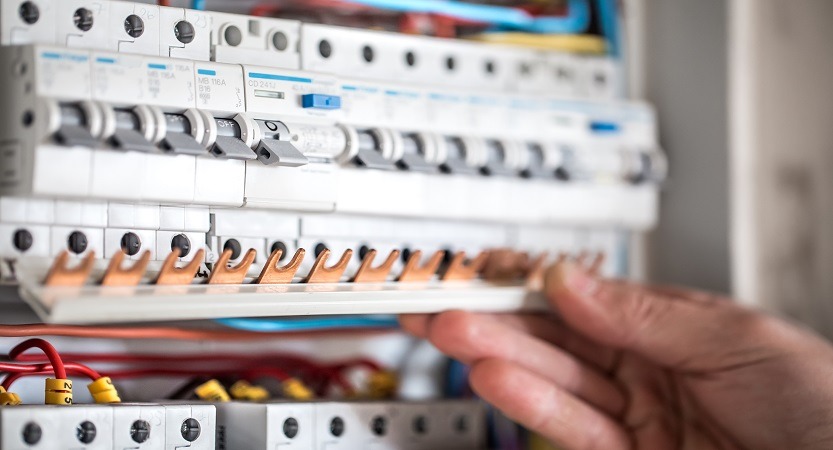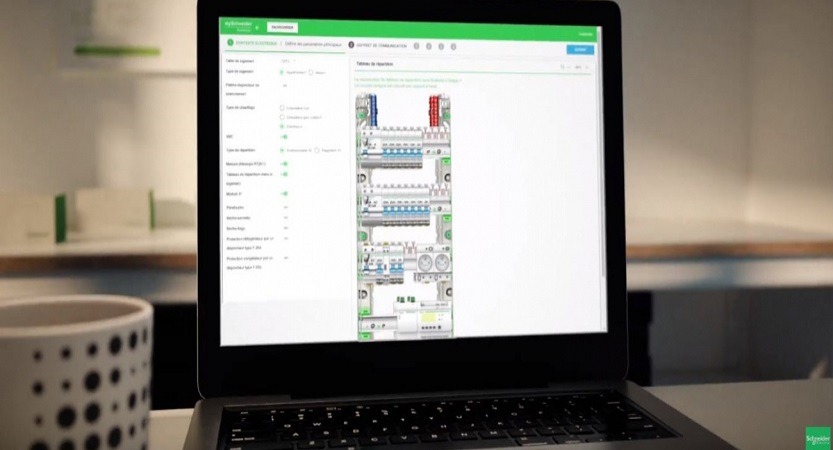1. Introduction
In modern electrical panels, especially in automation, secondary distribution or industrial control systems, it is common to include not only protective devices (breakers, residual current devices, fuses) but also additional control logic: timing, delayed switching, sequential start-up, or simple automation.
That’s exactly where multifunction relays — also known as multifunction time relays — become essential.
In this review we’ll analyze the CNC YCT8 as a reference multifunction relay, while also explaining how these devices work, their importance in electrical panels, the main selection criteria, and the practical benefits of using them.
2. What is a Multifunction Relay?
2.1 Basic Relays vs. Multifunction Relays
A traditional relay is simply an electrically operated switch: a coil energizes and changes the state of one or more contacts (normally open or normally closed).
However, in many real-world applications, instantaneous switching is not enough. Engineers need timing, delays, pulses, or cycles. A multifunction relay integrates several timing and logic modes into a single DIN-rail module, allowing installers to select the behavior according to their application.
Typical modes include:
-
Delay-on (ON delay)
-
Delay-off (OFF delay)
-
Cyclic ON/OFF operation
-
Impulse/pulse output
-
Asymmetric cycles (different ON and OFF times)
-
Combined delay + pulse functions
This flexibility makes multifunction relays a cost-effective way to introduce logic into electrical panels without requiring PLCs or advanced controllers.
2.2 Why They Are Important in Electrical Panels
Multifunction relays are critical in panel design because:
-
Compact and modular → standard DIN-rail mounting saves space.
-
Versatile → one device offers several timing modes and ranges.
-
Local intelligence → simple automation without a PLC.
-
Improved efficiency and safety → reduces inrush currents, improves equipment lifespan, avoids simultaneous starts.
-
Easy maintenance → plug-and-play replacement with minimal wiring changes.
In short, multifunction relays are the “Swiss army knife” of timing and logic inside electrical enclosures.
3. CNC YCT8 Multifunction Relay Review
3.1 Key Technical Specifications
-
Supply voltage: 230 V AC (50/60 Hz)
-
Supply tolerance: -15% / +10%
-
Power supply indicator: Green LED
-
Rated load current: up to 16 A
-
Mounting type: DIN rail (standard profile)
-
Dimensions: approx. 18 × 65 × 90 mm
-
Functions available: 10 timing modes
-
Design highlights: low power consumption, high stability, reliable operation (manufacturer claims)
3.2 Operating Modes
The YCT8 provides 10 selectable functions, including:
-
ON delay
-
OFF delay
-
Repetitive ON/OFF cycle
-
Pulse generation
-
Alternating outputs
-
Delay + impulse combinations
For instance, in delay-off mode, once the control input is deactivated, the relay output remains active for the pre-set time before switching off.
3.3 Strengths
-
Wide range of functions and timing options
-
16 A output current — suitable for small motors, pumps, lighting
-
Compact DIN-rail mounting for easy integration
-
LED indicator for quick troubleshooting
-
Cost-effective solution for simple automation
3.4 Limitations
-
Limited to 230 V AC supply (no DC or 110 V versions found publicly)
-
Lack of publicly available detailed datasheet (tolerances, insulation, lifetime)
-
For heavy inductive loads, a contactor is recommended
-
Not suitable for complex logic beyond basic timing functions
4. How to Choose a Multifunction Relay
When selecting a multifunction relay for your electrical panel, consider:
-
Supply voltage compatibility (230 V, 110 V, DC versions).
-
Output current capacity (16 A is enough for moderate loads, larger loads need contactors).
-
Number of timing functions and ranges (seconds, minutes, hours).
-
Timing accuracy and tolerance.
-
Physical size and DIN-rail mounting space.
-
Input/output interface (control inputs, type of contacts).
-
Durability (contact life, mechanical endurance, isolation).
-
Visual indicators (LEDs for status).
-
Certifications (CE, IEC, UL).
5. Applications of Multifunction Relays
Typical use cases include:
-
Lighting control → automatic delay-off or timed switch-off.
-
Pumps and motors → delayed start to reduce inrush current.
-
Ventilation → fan continues to run for a set time after shutdown.
-
Simple automation → gates, valves, actuators with timing.
-
Cyclic operations → ON/OFF cycles for repetitive tasks.
The YCT8 can be used, for example, to keep a fan running for 5 minutes after a machine stops, or to automatically turn off lights 30 seconds after a door closes.
6. YCT8 vs. Competitors
Advantages:
-
Versatile with 10 functions in a single module
-
Higher load capacity (16 A) than many compact relays
-
Affordable and easy to integrate in panels
Disadvantages:
-
Limited input voltage flexibility (only 230 V AC)
-
Technical documentation is less detailed than top European brands (Finder, Omron, etc.)
-
May require external contactors for high loads
7. Conclusion
The CNC YCT8 multifunction relay is a solid option for engineers, electricians, and panel builders looking for a compact, versatile, and affordable timing relay for DIN-rail installation.
It covers most standard functions needed in automation and control, and while it doesn’t replace a PLC, it offers local intelligence at low cost, ideal for lighting, HVAC, pumps, and small motor control.
If your application requires simple timing logic with flexibility, the YCT8 is worth considering. For more advanced automation, pairing it with a controller or higher-grade relays is recommended.


